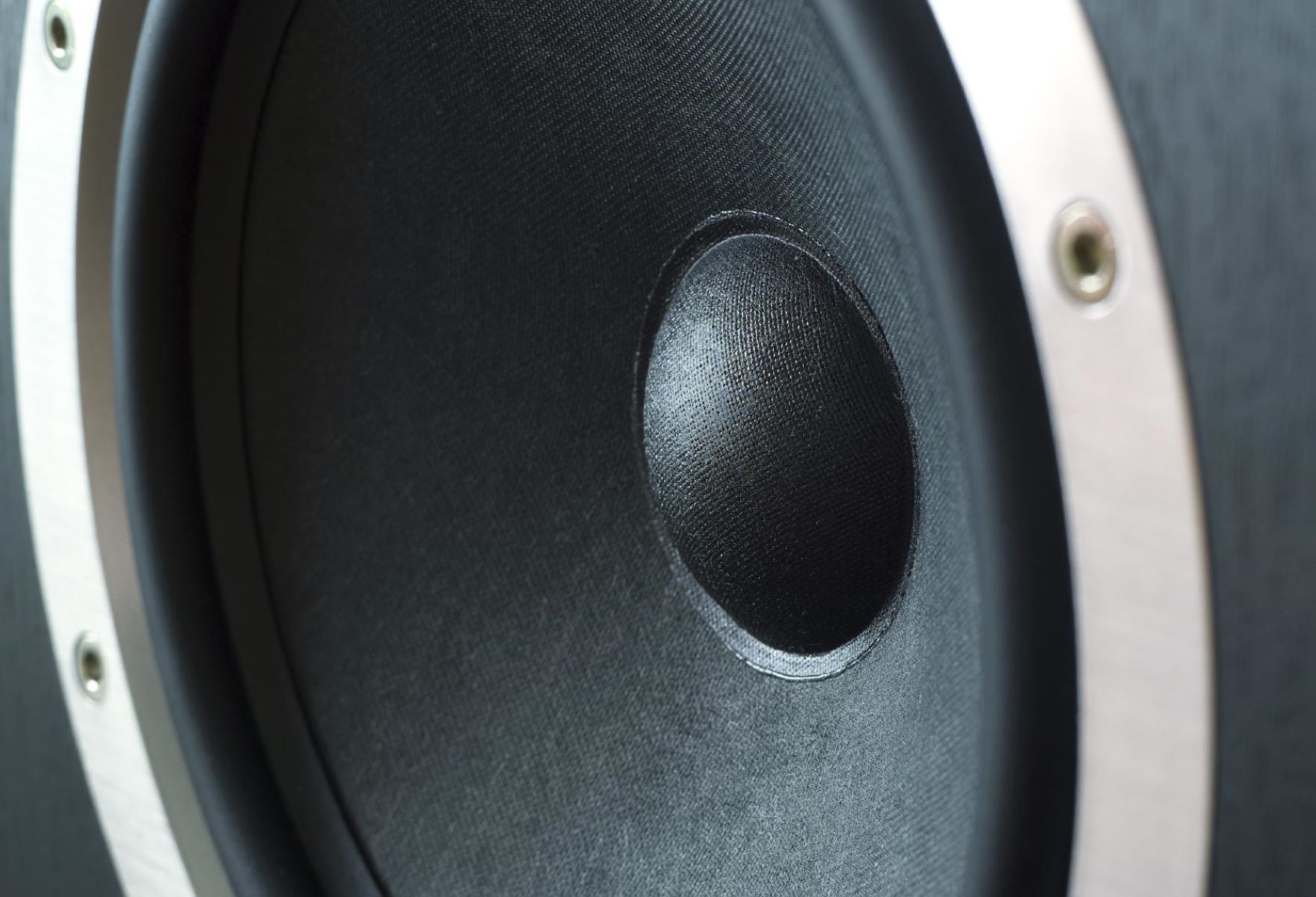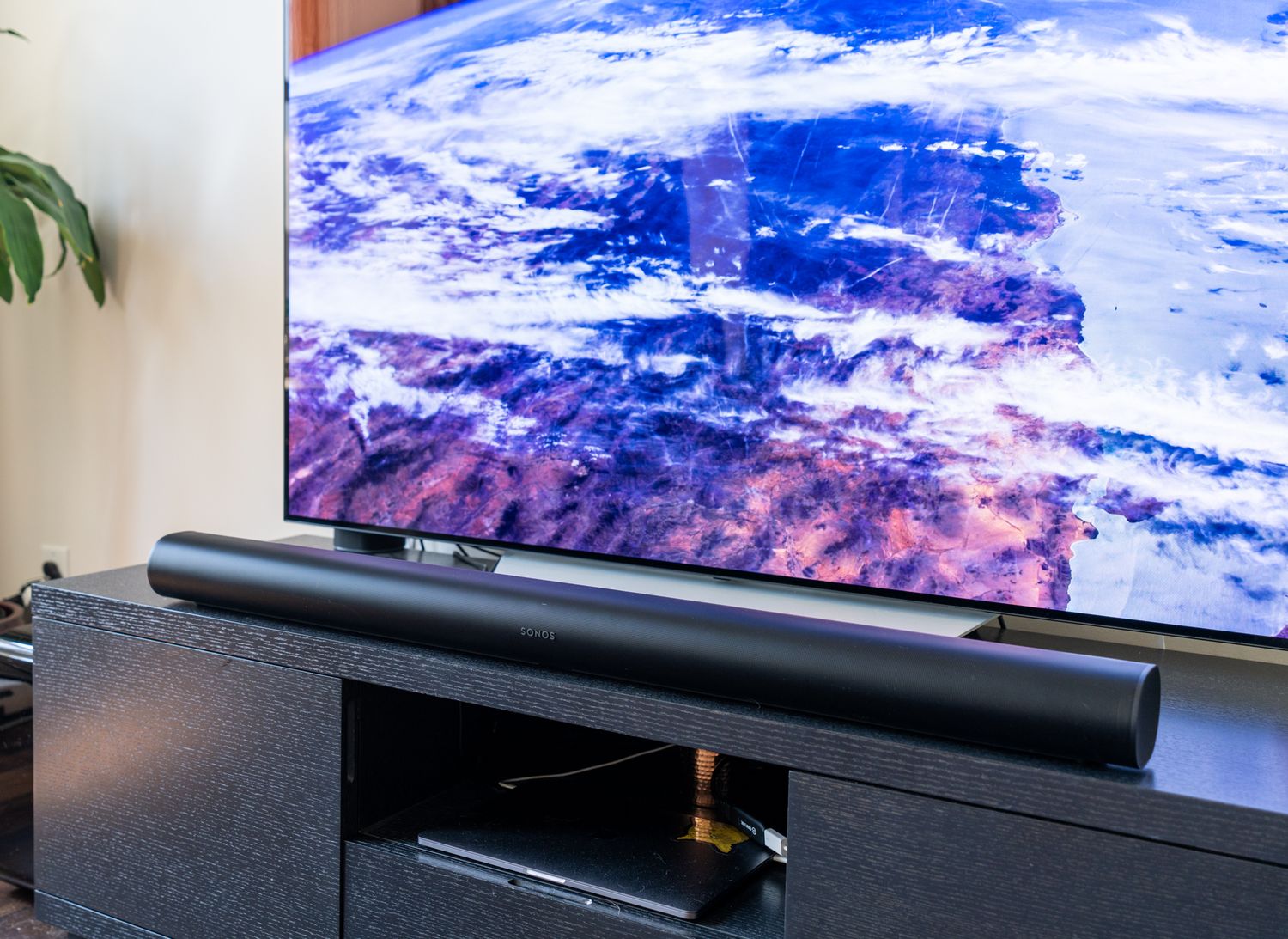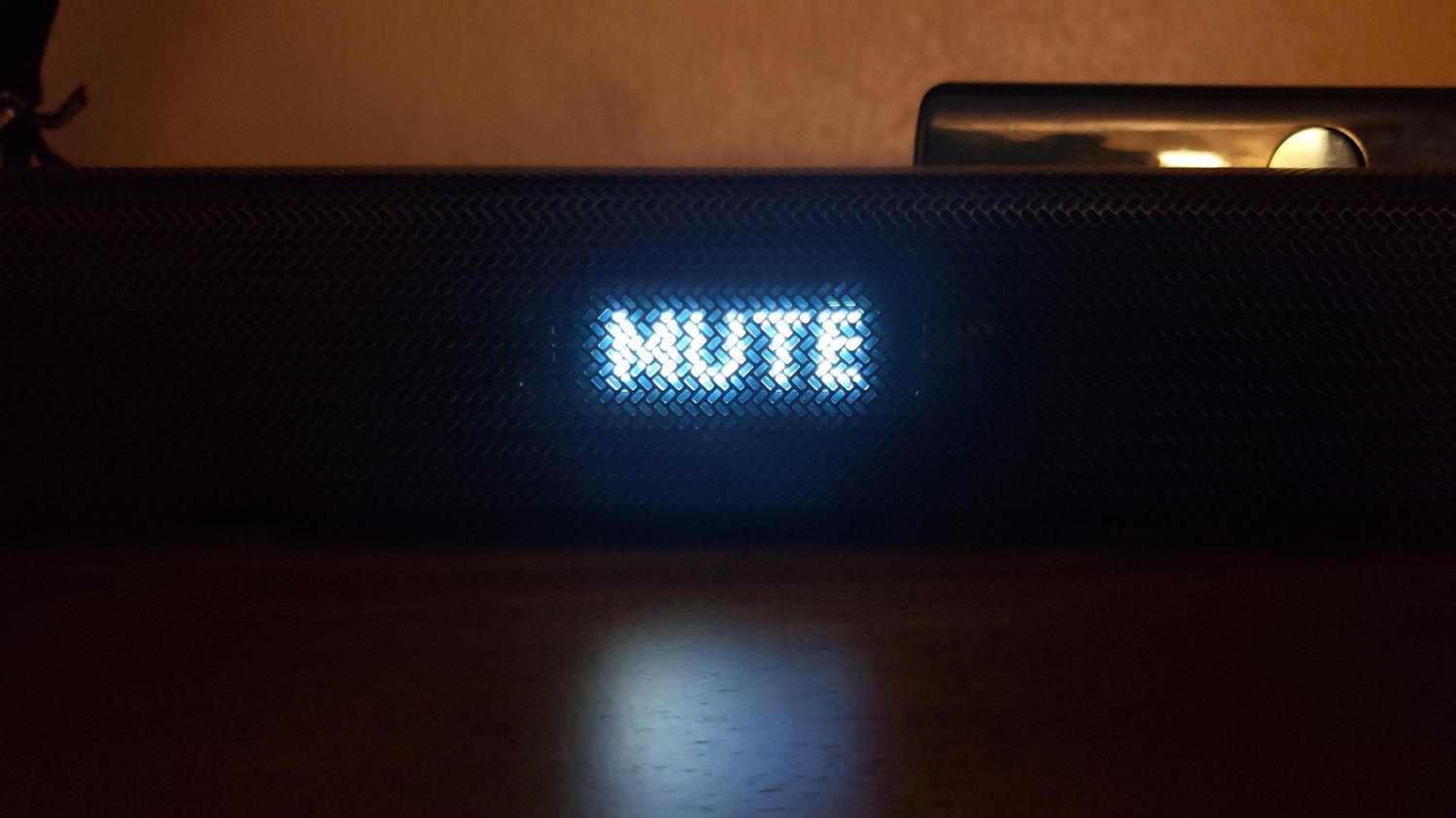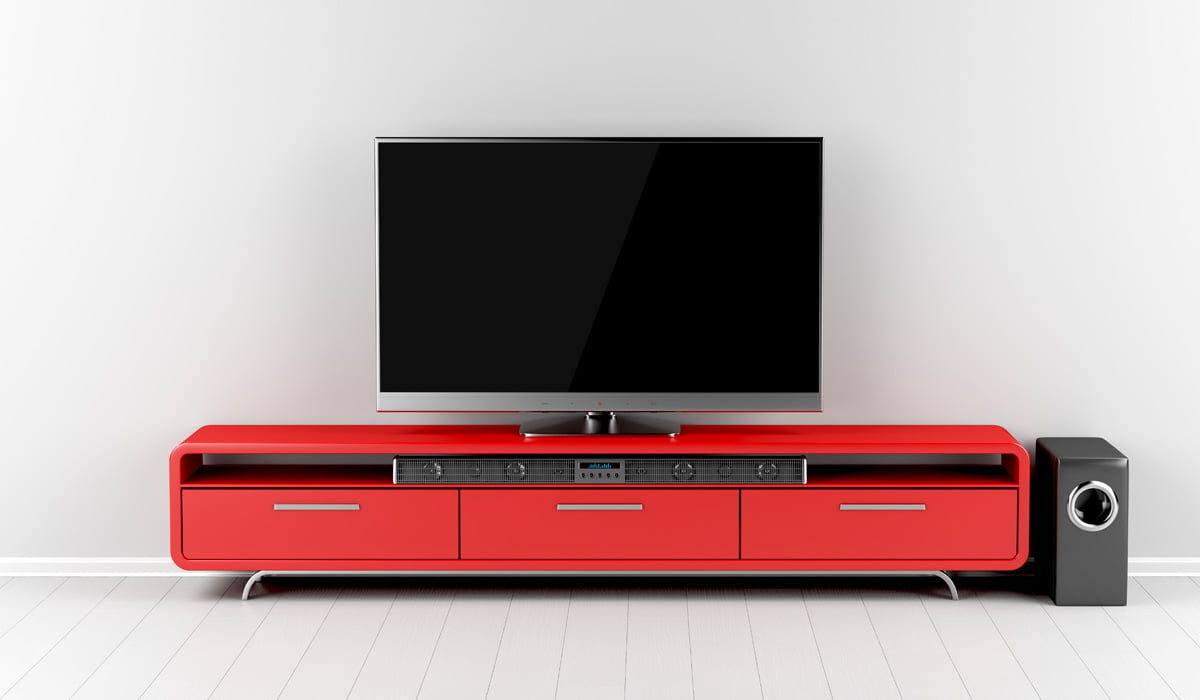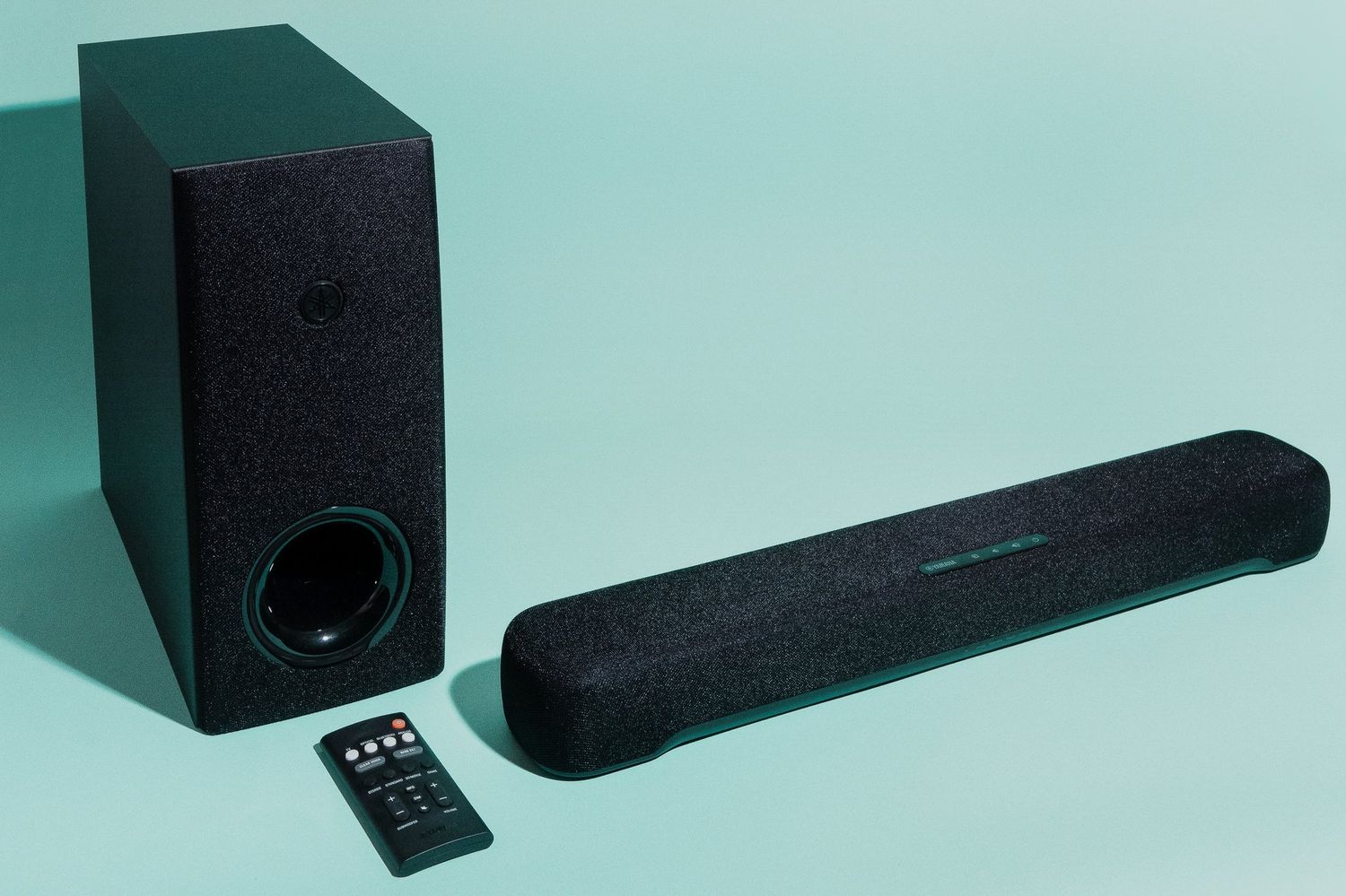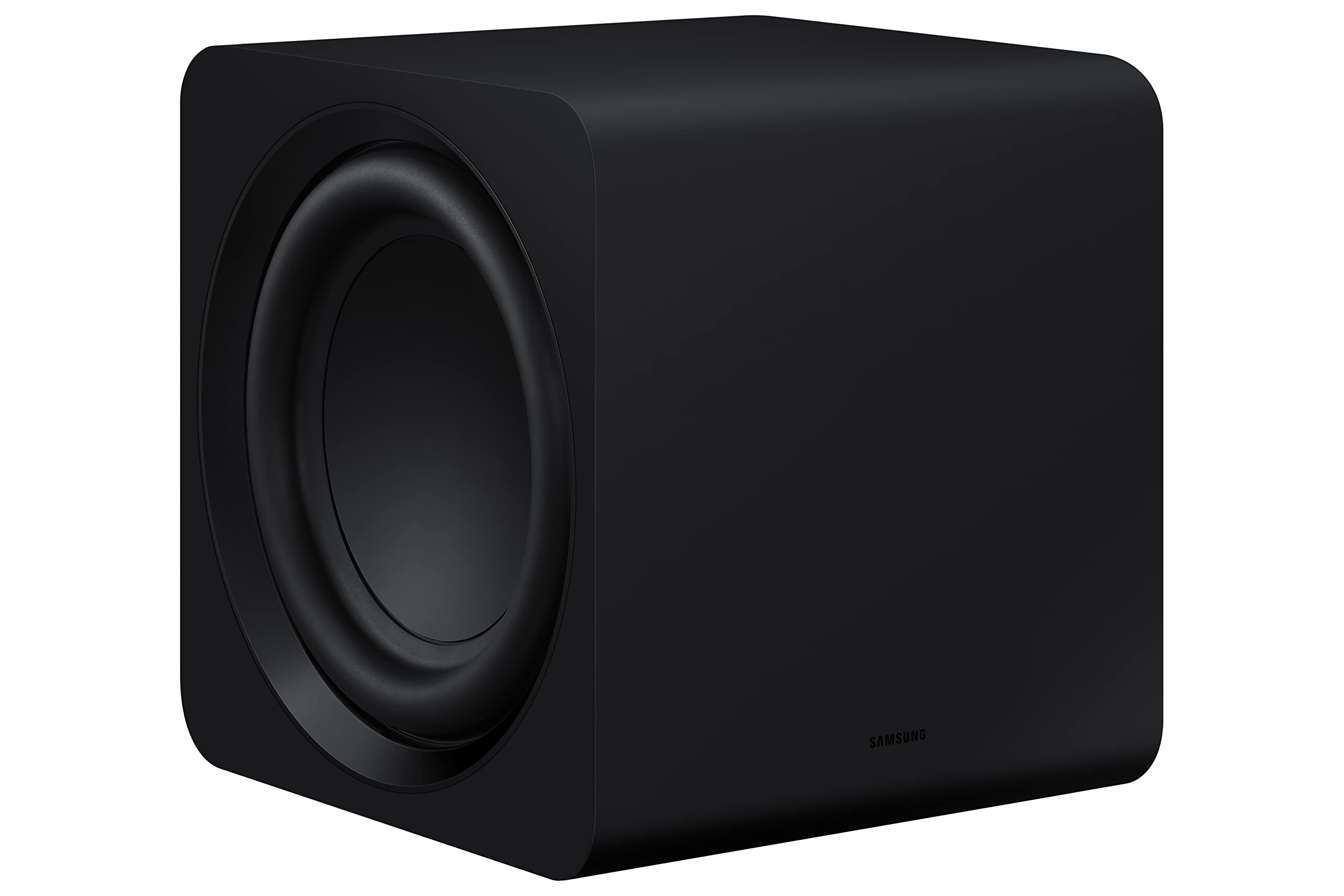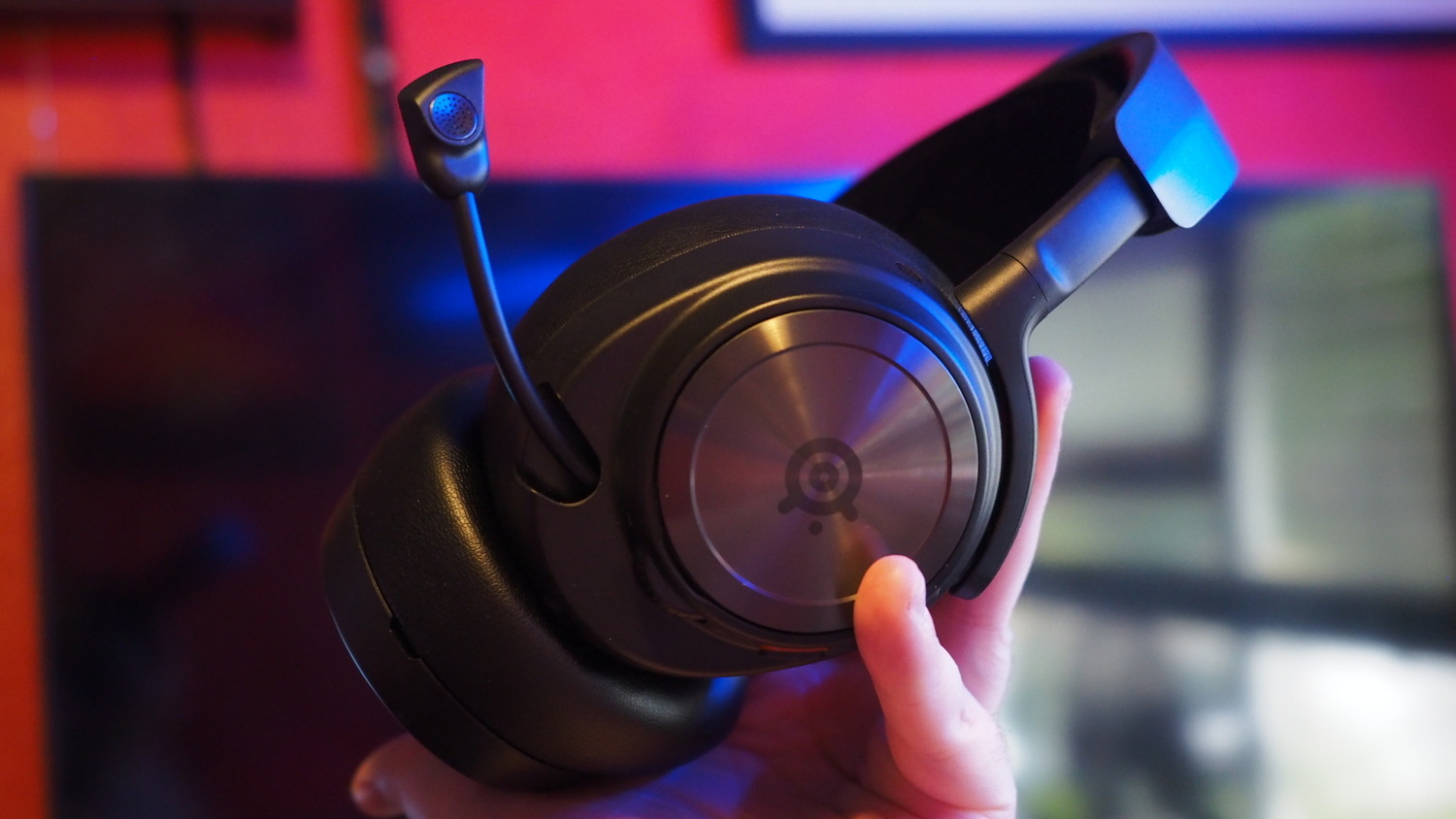Home>Production & Technology>Sound Bar>Why Is My Sonos Sound Bar Not Working
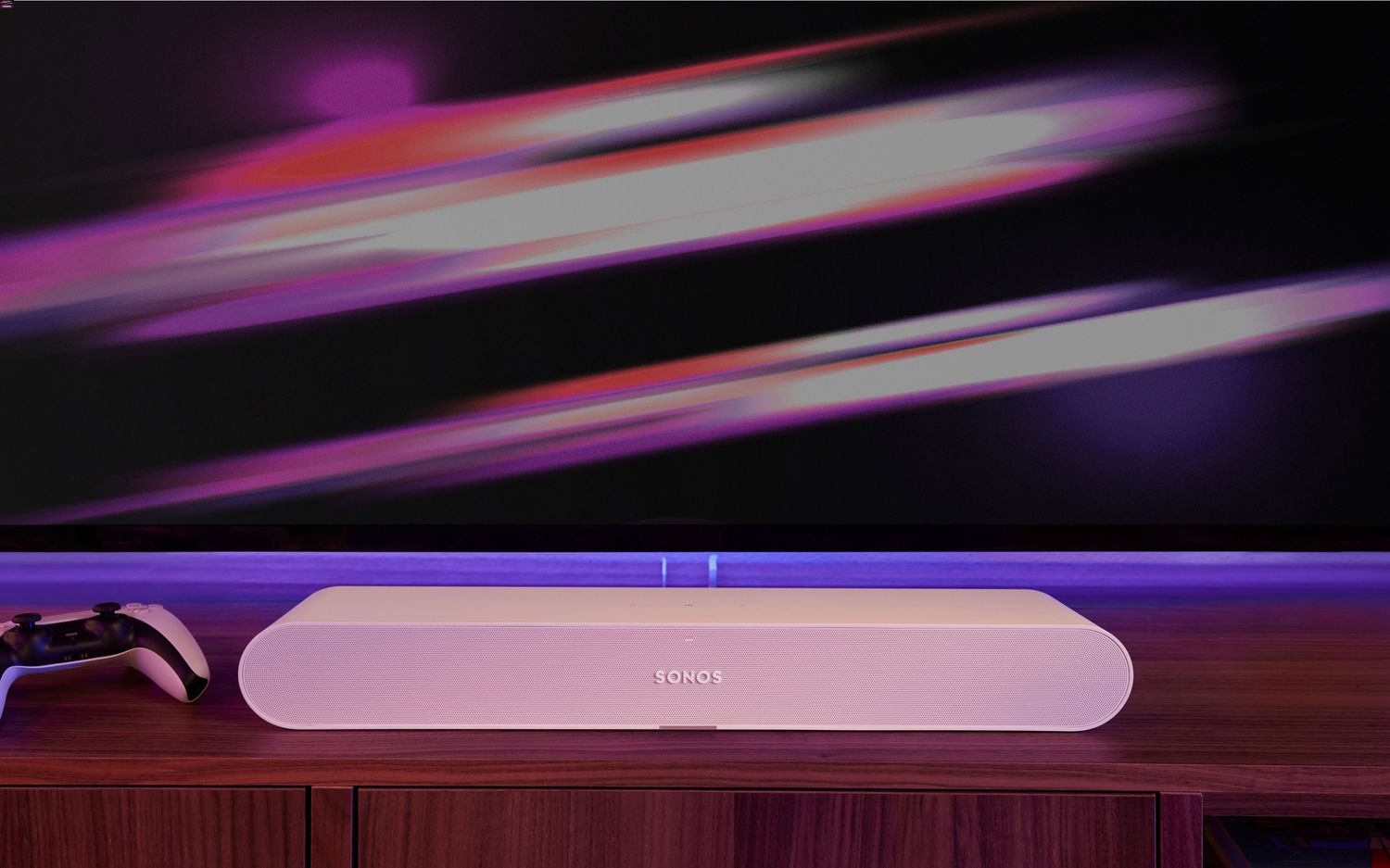

Sound Bar
Why Is My Sonos Sound Bar Not Working
Published: December 25, 2023
Experiencing issues with your Sonos sound bar? Learn why it's not working and find solutions to troubleshoot the problem.
(Many of the links in this article redirect to a specific reviewed product. Your purchase of these products through affiliate links helps to generate commission for AudioLover.com, at no extra cost. Learn more)
Table of Contents
Introduction
Having a sound bar is a great way to enhance your home theater experience. It provides rich audio quality and immersive sound, bringing movies, TV shows, and music to life. However, like any other electronic device, sound bars can encounter issues from time to time. If your Sonos sound bar is not working as expected, there could be a few reasons behind it.
In this article, we will delve into troubleshooting steps to help you get your Sonos sound bar up and running again. Whether you’re experiencing a complete audio outage or facing intermittent issues, we’ve got you covered. By following these steps, you may be able to identify and resolve the problem on your own, saving you time and frustration.
Before we dive into the troubleshooting process, it’s important to understand that electronic devices can sometimes experience technical glitches. Rest assured that Sonos sound bars are renowned for their quality and performance. However, if you’re still facing persistent issues after troubleshooting, don’t hesitate to reach out to Sonos customer support for further assistance.
Now, let’s get started with the troubleshooting steps for your Sonos sound bar!
Troubleshooting Steps for Sonos Sound Bar
When your Sonos sound bar is not working properly, there are several troubleshooting steps you can take to determine the cause of the issue and potentially resolve it. Here are some common steps to follow:
- Check Power and Connectivity: Ensure that the power cable is securely plugged into both the sound bar and the power outlet. Additionally, check the connection between the sound bar and your TV or audio source. Make sure all cables are properly connected and undamaged.
- Reset the Sound Bar: Performing a reset can often resolve minor glitches. To reset your Sonos sound bar, unplug it from the power source, wait for about 10 seconds, and then plug it back in. This process can help refresh the system and potentially fix any temporary issues.
- Update Software and Firmware: Outdated software or firmware can sometimes cause compatibility issues. Ensure that both your sound bar and the Sonos app are running the latest versions. Check for updates in the Sonos app settings and follow the instructions to update the software and firmware.
- Adjust Audio Settings: Incorrect audio settings can impact the sound quality or functionality of your sound bar. Ensure that the audio output settings on your connected devices, such as the TV or media player, are correctly configured to output sound through the sound bar. Also, check the sound bar’s settings for any specific options that may affect the audio output.
- Contact Sonos Support: If the above steps do not resolve the issue, it’s time to seek assistance from Sonos support. They have a dedicated team of experts who can provide personalized guidance based on your specific situation. Reach out to Sonos customer support via phone, email, or live chat for further assistance.
Remember, troubleshooting steps may vary depending on the specific Sonos sound bar model you have. It’s always a good idea to consult the Sonos user manual or visit the Sonos support website for model-specific troubleshooting instructions.
By following these troubleshooting steps, you can potentially resolve common issues with your Sonos sound bar. Don’t get discouraged if you encounter a problem – technical issues happen, but with the right approach, you can get your sound bar back to working order and enjoy your favorite audio content once again.
Checking Power and Connectivity
One of the first steps in troubleshooting your Sonos sound bar is to check the power and connectivity. A loose or faulty connection can cause the sound bar to malfunction or not work at all. Here’s what you can do:
- Ensure that the power cable is securely plugged into both the sound bar and the power outlet. Sometimes, a power cable can become loose due to accidental bumps or movements. Double-check that the power cable is firmly inserted into the sound bar and the wall outlet.
- Inspect the cables connecting the sound bar to your TV or audio source. Make sure they are securely plugged in and free from any visible damage. Sometimes, a loose or damaged cable can interrupt the audio signal, resulting in no sound or poor sound quality. If you notice any frayed or damaged cables, consider replacing them.
- If you’re using a wireless connection, ensure that the Wi-Fi signal is stable and the sound bar is connected to the correct network. Weak Wi-Fi signals or incorrect network settings can affect the connectivity and performance of your Sonos sound bar. Try moving the sound bar closer to the Wi-Fi router or adjusting the router’s settings for optimal performance.
- If you have other Sonos speakers or components connected to your system, check if they are working properly. Sometimes, issues with one device can impact the entire Sonos system. Make sure all components are powered on and connected correctly.
If you’ve checked all the power and connectivity aspects and the sound bar is still not working, move on to the next troubleshooting steps. It’s possible that the issue lies elsewhere, such as software or audio settings. However, addressing power and connectivity issues should always be the first step in troubleshooting any electronic device.
By ensuring proper power supply and establishing a secure and stable connection, you give your Sonos sound bar the best chance of functioning correctly. In many cases, this simple step can resolve the issue and save you from further troubleshooting.
Resetting the Sound Bar
If your Sonos sound bar continues to have issues even after checking the power and connectivity, performing a reset may help resolve the problem. Resetting the sound bar can help clear any temporary glitches or conflicts that may be causing the malfunction. Here’s how to reset your Sonos sound bar:
- Unplug the sound bar from the power source.
- Wait for about 10 seconds to allow the device to fully power down.
- Plug the sound bar back into the power outlet.
- Wait for the device to power up and reconnect to the network.
After resetting the sound bar, test it to see if the issue has been resolved. Play some audio content and check if the sound is coming through as expected. If the sound bar is still not working correctly, proceed to the next troubleshooting steps.
Keep in mind that resetting the sound bar will not affect any stored settings or configurations in the Sonos app. It simply refreshes the system and allows for a clean start. However, if you have made custom audio settings or adjustments, you may need to reconfigure them after the reset.
Performing a reset is a common troubleshooting step for many electronic devices, including Sonos sound bars. It can often solve minor issues and restore the sound bar to normal functioning. If the problem persists, it’s time to explore other troubleshooting avenues to get your Sonos sound bar back in working order.
Updating Software and Firmware
Outdated software or firmware can sometimes cause compatibility issues and impact the performance of your Sonos sound bar. Keeping both the sound bar’s software and the Sonos app up to date is essential for optimal functionality. Here’s how you can update the software and firmware:
- Open the Sonos app on your mobile device or computer.
- Go to the settings menu within the app.
- Look for the “System Updates” or “Software Updates” option.
- Check if there are any available updates for your Sonos sound bar or the Sonos app itself.
- If updates are available, follow the on-screen instructions to download and install them.
- During the update process, make sure the sound bar remains connected to the power source and the network. Avoid interrupting the update process to prevent any potential issues.
Updating the software and firmware can resolve any known bugs or compatibility issues that may be causing your Sonos sound bar to malfunction. It’s important to regularly check for updates and install them to ensure optimal performance and compatibility with other devices and services.
In addition to updating the software and firmware, it’s also a good idea to keep your connected devices, such as your TV or media player, up to date. Ensure that they are running the latest software versions and firmware updates. This will help maintain compatibility and improve the overall performance of your Sonos sound bar.
If your Sonos sound bar is still not working after updating the software and firmware, move on to the next troubleshooting steps. It’s possible that the issue lies elsewhere, such as audio settings or network configuration.
Remember to always follow the manufacturer’s instructions and recommendations when updating software and firmware to avoid any potential issues or conflicts. By keeping your Sonos sound bar up to date, you can ensure a smooth and enjoyable audio experience.
Adjusting Audio Settings
Incorrect audio settings can sometimes lead to issues with your Sonos sound bar. Whether it’s a problem with the sound output or specific audio settings, making the necessary adjustments can help improve the overall sound quality and functionality. Here’s how you can adjust the audio settings:
- Check the audio output settings on your connected devices, such as your TV or media player. Ensure that the audio is set to output through the Sonos sound bar. Sometimes, the audio might be routed to the TV speakers instead. You can usually find these settings in the audio or sound settings menu of your device.
- Explore the audio options within the Sonos app. The app provides various settings and controls that allow you to customize the sound experience. Take a look at the equalizer settings to adjust the bass, treble, or other audio elements according to your preferences. Experiment with different settings to find the optimal audio balance.
- If you’re experiencing audio sync issues, where the sound is not synchronized with the video, you can adjust the audio delay settings in the Sonos app. This feature allows you to manually sync the audio with the video playback for a seamless viewing experience.
- Consider the placement and positioning of your Sonos sound bar. Sometimes, the physical location of the sound bar can affect the sound quality. Ensure that the sound bar is not obstructed by any objects and that it has sufficient space to project sound. Experiment with different placements to maximize the audio performance.
- If you have other Sonos speakers or components in your system, check if their audio settings are causing any conflicts. Make sure that all devices are properly configured and synchronized in terms of audio output.
By adjusting the audio settings, you can tailor the sound output of your Sonos sound bar to your liking and ensure optimal performance. Remember to experiment with different settings and configurations until you find the ideal audio setup for your preferences and the content you’re enjoying.
If the audio issues persist even after adjusting the settings, it’s recommended to proceed to the next troubleshooting steps to further diagnose and resolve the problem.
Contacting Sonos Support
If you have followed the troubleshooting steps mentioned earlier and your Sonos sound bar is still not working properly, it may be time to seek assistance from Sonos support. The Sonos customer support team is dedicated to helping customers resolve issues and providing personalized guidance. Here’s how you can contact Sonos support:
- Phone: The most direct way to reach Sonos support is by phone. Visit the Sonos website and locate the contact number for your region. Dial the number and explain the issue to the customer support representative. They will guide you through the troubleshooting process and provide further assistance.
- Email: If you prefer written communication, you can reach out to Sonos support via email. Visit the Sonos website and look for the email address or contact form. Provide a detailed description of the issue you are facing and include any relevant information, such as your Sonos sound bar model and software version. The support team will respond to your inquiry and provide further guidance.
- Live Chat: Some regions also offer live chat support on the Sonos website. Look for the live chat option and initiate a conversation with a support agent. This allows for real-time interaction and instant troubleshooting advice to help resolve the issue.
When contacting Sonos support, it’s helpful to have some information ready, such as the model number, software version, and a description of the problem you’re experiencing. This information can assist the support team in diagnosing the issue more effectively. Be prepared to follow any further troubleshooting steps they may suggest in order to resolve the problem.
Remember, Sonos support is available to assist you with any technical difficulties or inquiries you may have. They have the expertise and knowledge to address a wide range of issues and provide the best possible resolution for your Sonos sound bar.
By reaching out to Sonos support, you can ensure that you receive the necessary assistance to get your sound bar working properly again. Don’t hesitate to contact them if you’ve exhausted all other troubleshooting options.
Conclusion
When your Sonos sound bar is not working as expected, it can be frustrating. However, by following the troubleshooting steps outlined in this article, you have a good chance of identifying and resolving the issue on your own.
We started by checking the power and connectivity of the sound bar, making sure all cables are securely plugged in and undamaged. If that didn’t resolve the problem, we proceeded to reset the sound bar, which can often clear temporary glitches. Updating the software and firmware is another important step, as outdated versions can cause compatibility issues.
Adjusting the audio settings, such as output configurations and equalizer settings, can significantly enhance the sound quality and resolve audio-related issues. And if all else fails, don’t hesitate to contact Sonos support for personalized assistance.
Remember, troubleshooting steps may vary depending on the specific Sonos sound bar model you have. Be sure to consult the Sonos user manual or visit the Sonos support website for model-specific instructions.
By following these troubleshooting steps and seeking assistance when needed, you can get your Sonos sound bar back to working order and enjoy your favorite audio content with a rich and immersive experience.


